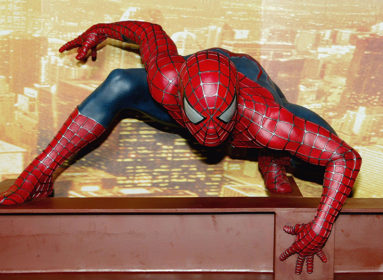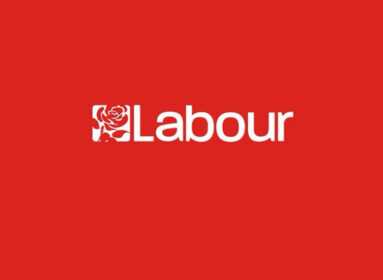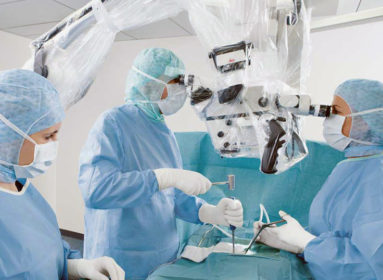
By Judie Jacobson
In June 2016, an international team of researchers led by the University of Hartford’s Dr. Richard Freund uncovered a 100-foot long tunnel that was hand-dug during the Holocaust by 80 Jewish prisoners desperately seeking to escape the infamous Rasu Prison near Vilnnius, Lithuania. Only 11 survived the war and lived to tell the story of their courageous escape on the last night of Passover, April 15, 1944 (see “Holocaust Escape Tunnel Found in Lithuania,” Jewish Ledger, July 3, 2016).
Science reporters at The New York Times were among the first to report on the discovery of the Holocaust escape tunnel, calling it one of the most memorable science stories of 2016. The discovery was also the subject of hundreds of stories worldwide, including in Newsweek, The Washington Post, CNN and the BBC.
Now, the tunnel’s discovery is the subject of “Holocaust Escape Tunnel,” a NOVA science series documentary scheduled to premiere on April 19 on PBS.
The University of Hartford will host a “sneak preview” of the documentary on Thursday, March 2, 7:30 p.m. in the Wilde Auditorium of the university’s Harry Jack Gray Center. Freund, who is also director of the university’s Maurice Greenberg Center for Judaic Studies, will be on hand to discuss the project.
Following his talk in Hartford, Freund will also discuss the project at sneak previews to be held at the Museum of Jewish Heritage in New York City, PBS in Richmond, Virginia and Spokane, Washington, the American Jewish University in Los Angles, as well as at the premiere at the U.S. Holocaust Memorial Museum in Washington, D.C.
Recently, the Ledger spoke with Dr. Freund about the documentary and his upcoming talk.
Jewish Ledger (JL): How is the NOVA Television Documentary of the work in Lithuania progressing?
Richard Freund (RF): The documentary is finished and now we are working on building audience for the program leading up to the premiere on the night after Passover, April 19. At the “sneak preview” event at the University of Hartford on March 2 the audience will hear about the back-story including an update of the 2017 excavation that will include our work on the search for “Jacob Gens” and four projects in Kovno and Vilna. We also will be introducing a new APP for Android and iPhone with a local company CCAT that will be available for free download on April 19 when the “Holocaust Escape tunnel” will be broadcast by NOVA worldwide. The APP is named: “Archaeology Quest: Vilna.”
JL: What were the biggest discoveries of 2016?
RF: Three of the most important discoveries that will be covered in the film are how our non-invasive technologies to uncover all three:
(1) The discovery of a 100 foot long Escape Tunnel used by 80 Jews who were in a burial pit in Ponar, Lithuania. (12 klms from Vilna). The discovery was listed by the NY Times as one of the top science stories of 2016. They tunneled out despite being shackled and the Jews used their hands and rudimentary tools and left on the last night of Passover, April 15, 1944.
(2) A 72-foot-long and 12-foot-deep unmarked burial pit in the forest of Ponar that according to our calculations contained as many as 7000 people.
(3) The bathhouse and mikvaot of the Great Synagogue of Vilna. The bathhouse provided hundreds of finds in the playground under an elementary school in downtown Vilna.
JL: How did the story affect you personally?
RF: I have now been around the country presenting the story to Jews and non-Jews and I am always surprised how moved most people are by the story. It speaks to both the most basic fears of people and the highest aspirations of courage and hope that people of all backgrounds find inspiring. Since my great-grandparents came from Vilna at the turn of the 20th century I never stop thinking that if they had not left our family would not exist.
JL: What will you be doing in Lithuania in 2017?
RF: We are scheduled to do one of the most important sites of the Holocaust in Vilna. HKP, a labor camp run by an altruistic Nazi, Major Karl Plagge. He was the “Oskar Schindler” of Vilna and is a “Righteous Among the Nations” at Yad Vashem. The story was the subject of a book by a local physician, Dr. Michael Good, Searching for Major Plagge (Fordham University Press, 2005) and it is one of the most gripping events because of the people who survived and told their stories.
JL: Are there local people that have helped in this work?
RF: Ada Gens Ustanjanipus of West Hartford, the daughter of Jacob Gens, and Michael Good, whose father, William, survived Ponar, and his mother, Pearl, who, with her father Samuel, survived the liquidation of HKP. I have now many students and community people who have asked specifically to work with us in 2017 in Lithuania.
JL: Are there new technologies that you’ve added in the past few years that have helped in the work you’re doing?
RF: We now have a new non-invasive technologies – thermal cameras that can see through walls, a method for infrared drone photography of large areas, a flexible, snake-like UltraGPR that can go into almost any area or terrain to map the sub-surface. It is amazing to work with people in industry and in universities all over the world who are excited to use them in the field.
JL: Will there be a Vilna exhibit at the University?
RF: An exhibition entitled: “Vilna: The Jerusalem of Lithuania” will be mounted for the Museum of Jewish Civilization at the University of Hartford. The new Greenberg Center that will have new areas to display and research the Holocaust and archaeology will be opening in the coming year.
JL: You are also doing quite a bit of work in Rhodes and Israel. Has that been affected by the time that you’re spending in Lithuania?
RF: We continue our work in Rhodes and the island of Kos thanks to generous donations to our Avzaradel-Capuano Rhodes Excavations Project. We go back in 2018. My book that will be published in 2018 includes a full recounting of the discoveries in Rhodes: Rhodes and Vilna: Geo-science, Archaeology and the Holocaust.
JL: What will people see at the March 2 sneak preview?
RF: Eight minutes of the 54-minute documentary and exclusive photos of the discoveries made.
The March 2 Sneak Preview event is free and open to the public. For more information: (860) 768-4964, mgcjs@hartford.edu.







 Southern New England Jewish Ledger
Southern New England Jewish Ledger















